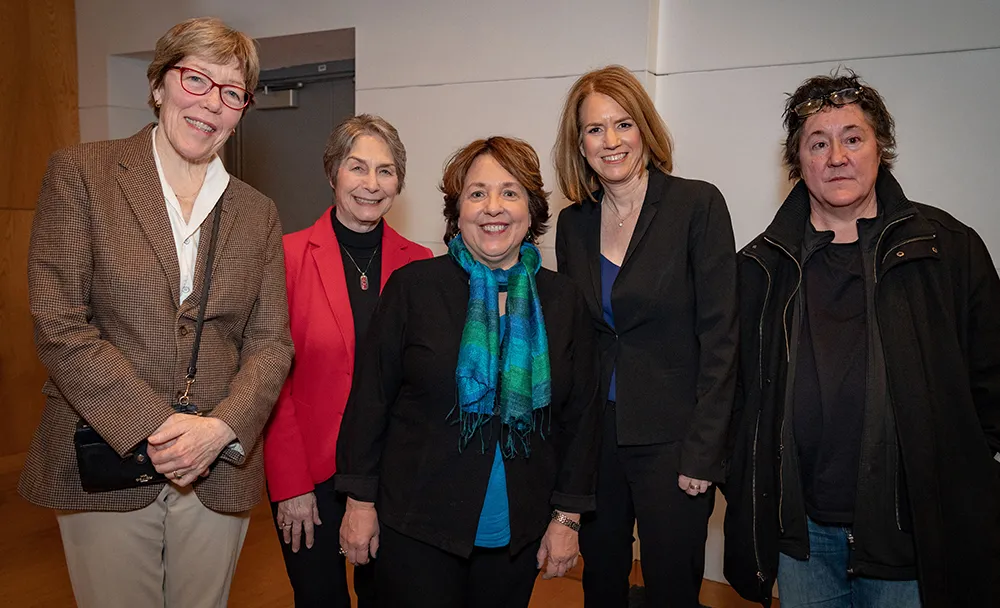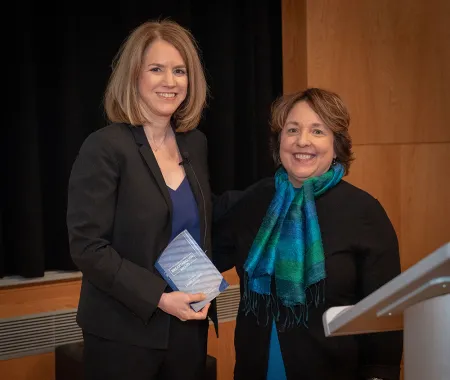When you pick up a newspaper or turn on the nightly news, how often is a woman quoted as an expert or featured as the subject of a story?
The fact is, the front pages of the global news media cite women just 20 percent of the time. That underrepresentation of women in news sourcing has led one media organization, Bloomberg News, to tackle the issue by launching a companywide effort to increase women’s voices in its coverage.
From providing media training to female executives to boosting the number of women interviewed on Bloomberg Television, the initiative has been led by Laura Zelenko, the company’s senior executive editor for diversity, talent, standards and training. On March 21, Zelenko was honored for her work when she received Ithaca College’s Jessica Savitch Breakthrough Award at a Women in Media Panel on campus.
The award, which recognizes broadcasters for their professional excellence and mentoring of future journalists, was named after one of the first women to anchor an evening network news broadcast. A 1968 graduate of Ithaca College, Jessica Savitch died in a car accident at the age of 36 after a groundbreaking career at NBC.
“Media awards often go to people who are in front of the camera,” Diane Gayeski, dean of the Roy H. Park School of Communications, said before presenting the award at the Park School Auditorium. “While they play important roles, there’s a lot more to promoting equity and diversity and women’s voices in the media, and often you don’t get to know the people who are not in front of the camera.”
Gayeski said that since the start of 2018, the percentage of women serving as expert commentators on Bloomberg Television climbed by 10 percent, while the number of women quoted or cited on Bloomberg’s TOP, or front page, also rose by nearly 10 percent.
Despite the progress Bloomberg has made, the gender gap in coverage throughout the news media is changing at a glacial pace, Zelenko said. “The representation of women in news, which Jessica Savitch, strove to address, remains far, far too low.”
In an hourlong panel discussion, Zelenko joined three women working in film, television, and a think tank on diversity and inclusion in entertainment to discuss the gains women have made in the media and where the gaps still persist.

